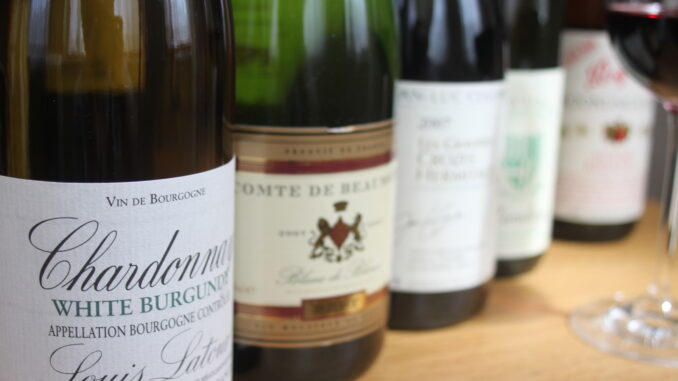

Which are better, Old World wines or New World wines? In the words of Harry Hill, “there’s only one way to find out…Fight!!”
Unfortunately this question has no simple answer due to many factors which affect a person’s individual preference including: tradition, cost, and food pairing.
Let’s start by quickly touching on what is meant by Old World and New World wines as, unlike the authorities in charge of French wine bottle labelling, I don’t assume you already have a diploma in Oenology.
The Old World refers to any European country growing wines. The New World includes countries such as New Zealand, Australia, USA, Chile, and South Africa. In the past, their different attitudes towards wine making couldn’t be more different, and although the styles are starting to merge, there are still differences which can affect a person’s preferences in wine.
Typically European countries name their wines after the place the grapes have been grown, not the grape itself. It is believed that a wine should be a statement of the region, not the grape variety, and they are bound by a significant amount of red tape to ensure this doesn’t change. The French even have a word to encompass the varying regional and environmental factors which affect a wine including the soil, the climate, and the local wildlife. They call it ‘terroir’.
The problem is that this can all be rather confusing as it assumes that you know what region is allowed to grow a particular grape variety, and then which variety or varieties would be used in a particular wine. Couple this with the even more confusing labels, and many people are left scratching their heads in the supermarket wine aisle saying things like, “well…I like Chablis but I don’t like Chardonnay”.
So in comes the New World with their straight talking labels, clever branding, and most of all, some exceptional wines to match the Old World. New World wines will generally be labelled with more emphasis on the grape variety used rather than the exact location which the grapes were grown. For example, the majority of wine production in Australia takes place in the South. However, many of the wines will simply be labelled ‘South Australia’ with a slightly more detailed location on the rear label. More prominence is being given to the grape itself, helping to give buyers a chance to buy a type of wine they know they will like. In some respects, this is positive, but it may also limit people to drinking only certain types of wine rather than trying the whole host of wine which the world has to offer.
As far as the process of actually making wine is concerned, this is the same wherever you are. The grapes are picked, crushed, pressed, fermented, matured and bottled. The differences between the production style of New World and Old World Wines would normally be found at the fermentation and maturing stage where, in the New World, the winemaker has far more control. This could include choosing whether to ferment the grapes in wooden vats or stainless steel tanks, and whether to mature the wine in oak barrels before bottling. These choices will have a major influence on the final style of the wine.
Therefore, if you are not too concerned about the traditional techniques of wine production, and don’t know your terroir from your Nan’s terrier, stick with the New World. You’ll still be getting some excellent wine where the winemaker has been able to put their passion, flair, and ideas into the winemaking process. However, for those more interested in tasting wine with a particular style which has been crafted over centuries, stick with the Old World.
All that said the two styles have started merging more than ever over the last decade. The Old World is picking up ideas from the New World in regards to cleaning up their wines, and the New World is trying to introduce more regional influence in theirs. So don’t get too stuck in your ways, try a Sancerre and compare it to a New Zealand Sauvignon Blanc. Try a Syrah from Northern Rhone and compare it to an Austrian Shiraz.
Next time we’ll look at how cost and value for money could affect whether you choose from the Old World or the New World. But until then, happy drinking!

Leave a Reply